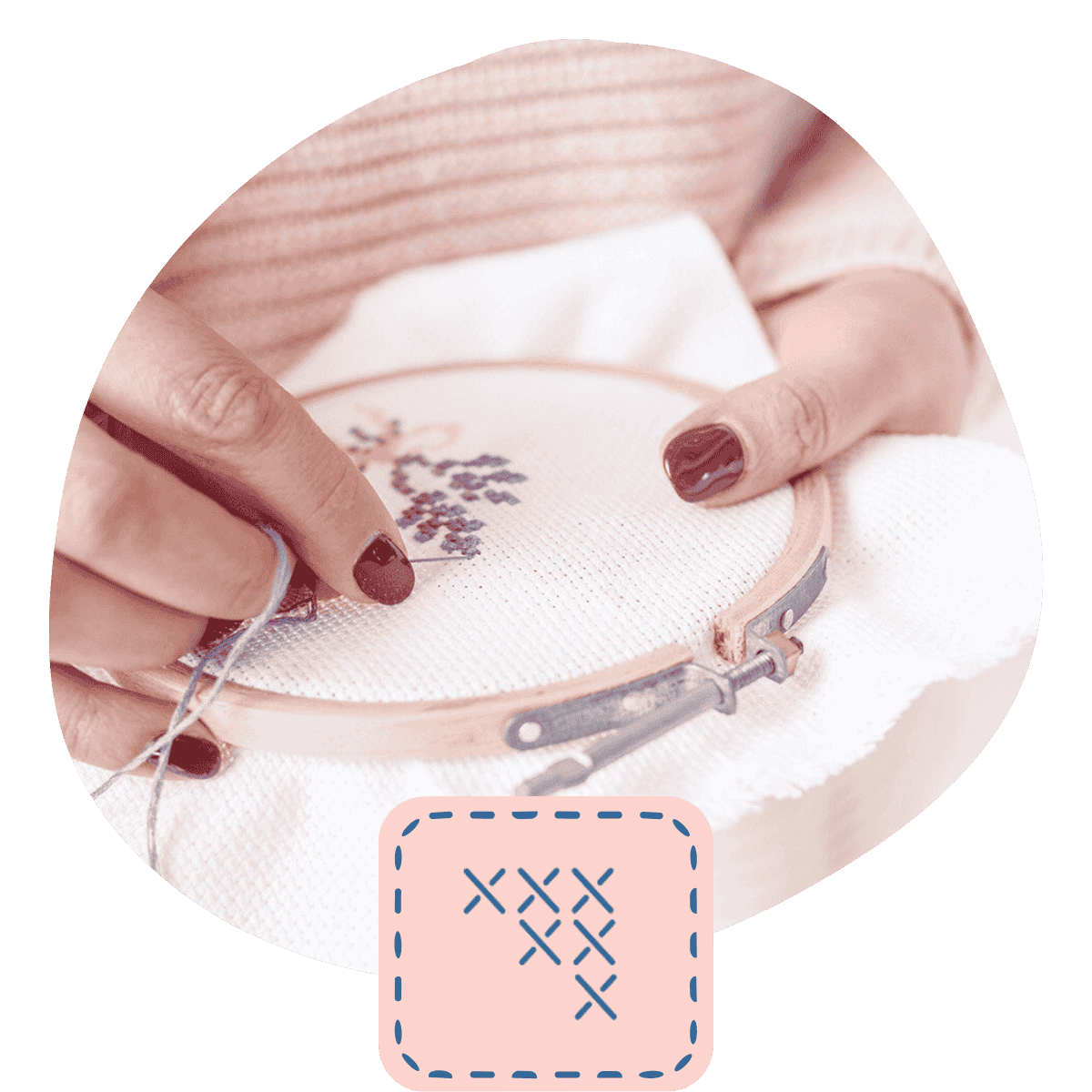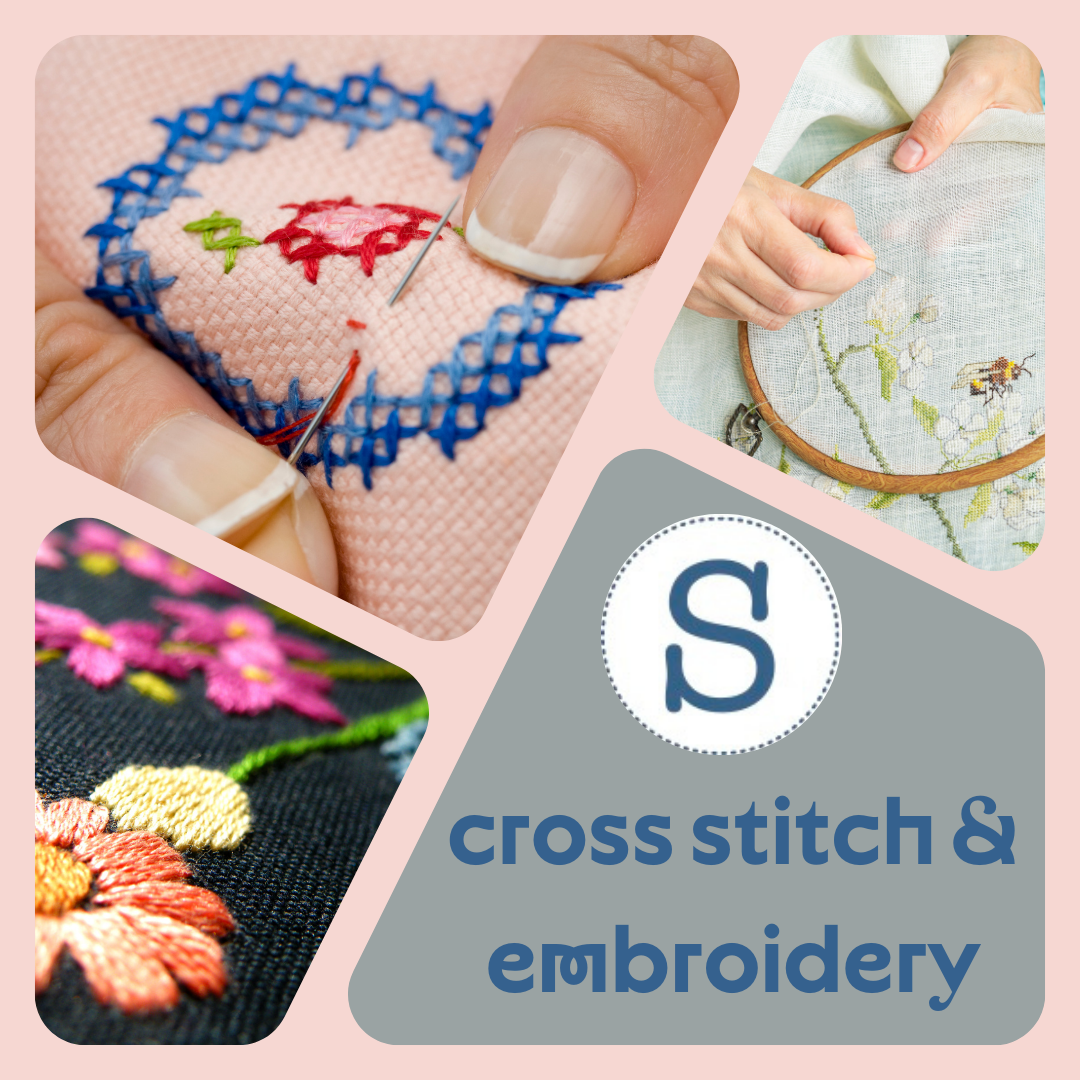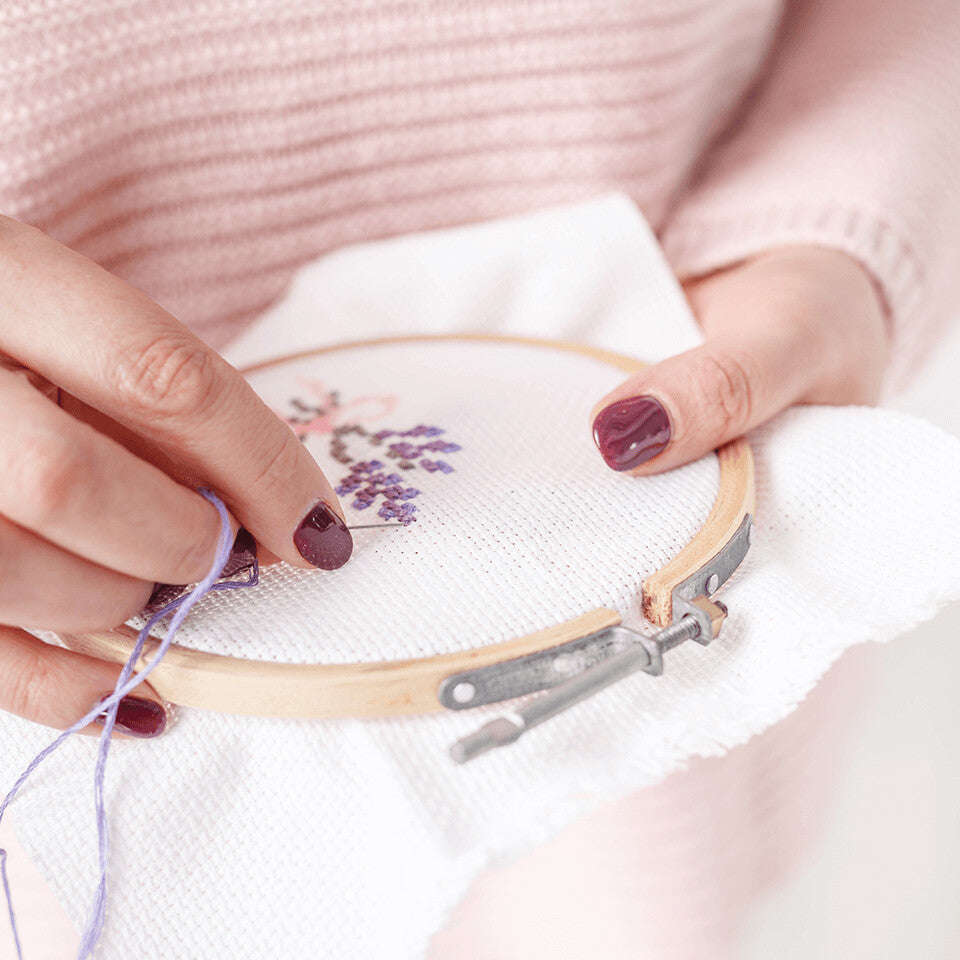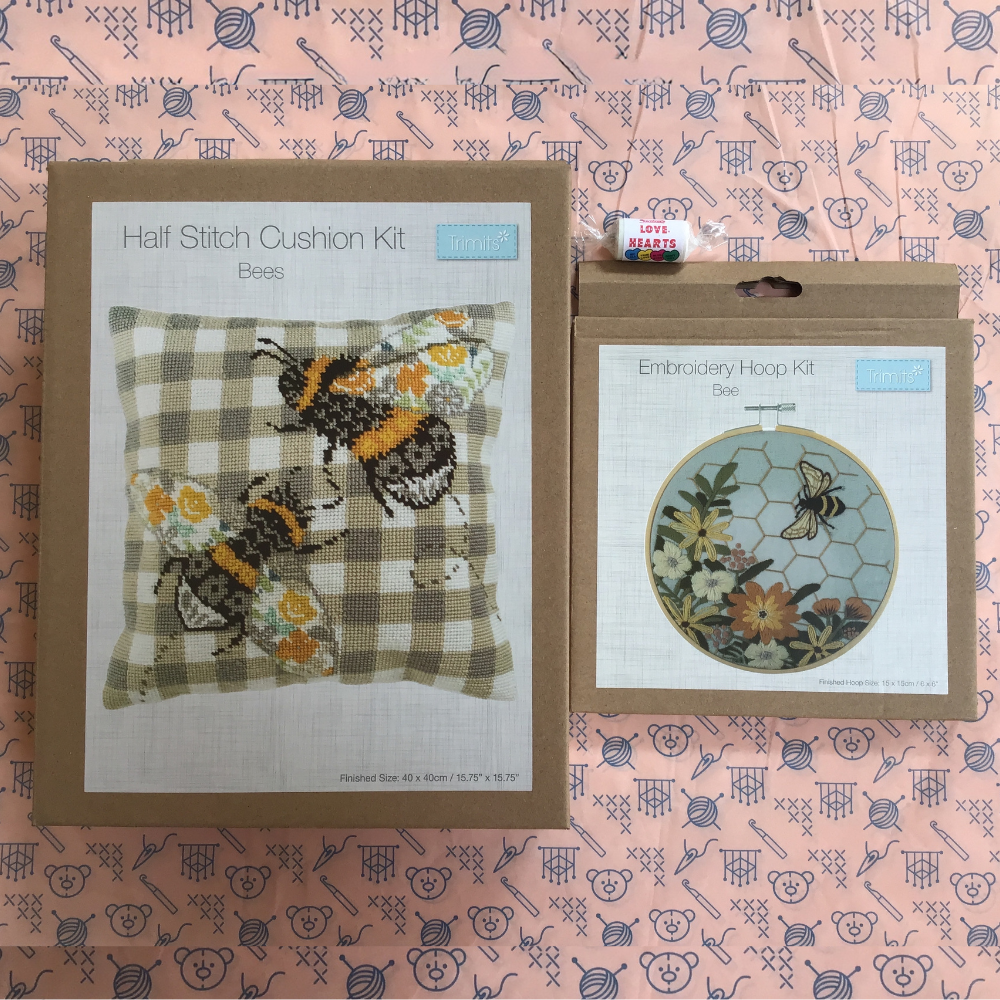
What is Cross Stitch?
Cross stitch is a form of counted thread embroidery that has been around for ages, and it is one of the easiest forms of hand embroidery to learn. Cross stitch is comprised of X-shaped stitches done on fabric with an even and open weave like Aida or linen.
What is Embroidery?
Embroidery is the art of working raised and ornamental designs in threads of silk, cotton, gold, silver, or other material, upon any woven fabric, leather, paper, etc, with a needle.
Embroidery is an ancient form of needlework that has been used worldwide to embellish textiles for decorative and communicative purposes. In terms of form and aesthetics, embroidery may add colour, texture, richness, and dimension.
stitchkitshop
Cross Stitch & Embroidery Stitch Kit



FAQs
What age should you start cross stitching?
Kids of any age can start learning to stitch, although it's normally at around six or seven that they start to show an interest in the hobby. Once they do, it's a great cue to start coaching them. Stitching is fantastically enjoyable, and you're sure to find it doubly so when you introduce a youngster to the hobby.
Is cross stitch making a comeback?
While it's been around since at least the middle ages, cross-stitch embroidery is making a strong comeback in the current crafting landscape.
Is cross stitching expensive?
While there are definitely ways to spend a great deal of money on specialized floss or large, intricate patterns from celebrated pattern designers, cross stitch at its core is very inexpensive to do.
Which fabric is best for cross stitch?
The fabric used for cross stitch is usually aida or Evenweave / linen (these two come in the same counts but are made of different materials; Evenweave is cotton and modal and obviously linen is linen). These fabrics are perfect for cross stitch because they are weaved evenly.
Does it matter which way you cross stitch?
Important to remember: No matter in which direction you are traveling the top stitch of your cross must always lie in the same direction.
How do you end a cross stitch/embroidery without a knot?
To end a thread without making a knot, use this method:
1. Take your threaded needle to the back of your fabric with your last stitch.
2. Run your needle under the last couple of stitches.
3. Clip the thread.
How many threads do you use in cross stitch?
Embroidery threads come in skeins and are made up of 6 separate strands. Before you start to cross stitch, you'll need to separate out a number of these strands to thread your needle with. It is usual to use 2 strands at a time but for certain stitches or techniques you may be asked to use more.
Why do you start cross stitch in the middle?
When you begin a new cross stitch project, it is a good idea to start stitching in the middle of the design. That way you make sure your design is centred in the fabric. Small arrows at the edges of a cross stitch chart indicate the centre points.
What embroidery stitches should I start with?
Start with one of these five basic stitches:
• Cross-stitch. Commonly used for decorative purposes, the cross-stitch is X-shaped and arranged like tiles.
• Whipstitch. The thread spirals around the edge of one or both pieces of fabric.
• Running stitch.
• Ladder stitch.
• Backstitch.
• Satin stitch
Is cross stitch easier than embroidery?
Both differ in the materials used as well as their level of difficulty. Embroidery is easier because it allows you to be more creative. While cross-stitch is a bit difficult especially for beginners but only uses one stitch.
What do I need to buy to start cross stitching?
5 Tips for Choosing Your First Cross Stitch Supplies
• Choose a Light-Colored 14 Count Cross Stitch Specific Fabric.
• Choose Floss-Based on the Quality, Need, and Availability.
• A Pack of Needles Is Necessary.
• 2 Pairs of Scissors Are Essential.
• Start out With a Plastic Hoop or Q-Snap.
Is cross stitching good for the brain?
Cross stitching and various needlework projects also allow people to stay focused. It allows their brain to concentrate at the task at hand--stitching--and not on the worry. Cross stitch allows the brain to focus and gives the body something to do, working together both mentally and physically.
Do I need a hoop to cross stitch?
A hoop is used to tighten the fabric, but unlike other embroidery stitches, a cross-stitch doesn't require the support from a hoop. So, you can easily cross stitch without a hoop. But, yes, you can do it with a hoop as well according to your preference.
Is cross stitch the same as embroidery?
Cross-stitch is a type of hand embroidery that uses x-shaped stitches and a tiled pattern to create an image, and for this reason often appears less fluid and boxier than regular embroidery. Because of its slightly angular quality, cross-stitch is often used to embroider words or mottos on items.
What is cross stitch used for?
Traditionally, cross-stitch was used to embellish items like household linens, tablecloths, dishcloths, and doilies (only a small portion of which would actually be embroidered, such as a border).
What is Stumpwork embroidery?
Stumpwork or raised work is a style of embroidery in which the stitched figures are raised from the surface of the work to form a 3-dimensional effect. Technique Stitches can be worked around pieces of wire to create individual forms such as leaves, insect wings or flower petals.
What are the basic embroidery stitches?
• Running Stitch. This is a basic stitch.
• Back Stitch. The back stitch creates a solid line so it is good for text or outline a design.
• Split Stitch. Start with a simple stitch and then bring your needle up again through the center of that stitch you just made.
• Satin Stitch.
• French Knot.
• Lazy Daisy/ Chain Stitch.
What is the difference between embroidery and crewel embroidery?
The word “crewel” is an old word that refers to the yarn itself, a two-ply wool yarn. Others prefer a looser definition of crewel embroidery that refers to the stitches and designs rather than the type of yarn. This embroidery is done with crewel-like stitches, but with cotton floss.
What type of needle is used for embroidery?
For embroidery, the most common size needles are 75/11, 80/12 and 90/14. Those are the three most common size needles used in commercial embroidering. When embroidering, smaller diameter needles should be used for lighter weight fabric and larger needles should be used for heavier fabric.
What are the materials used for embroidery?
The Basic tools and raw materials used for Hand Embroidery:
• Scissors: Scissors help to cut the threads whenever required.
• Needle with a hook in the end known as 'Aari' and is used to embroider the design on the fabrics.
• Beads and stones
• Threads: ...
• Matte Embroidery Cotton:
How difficult is embroidery?
Learning embroidery doesn't have to be difficult, and it definitely shouldn't feel like a huge investment of time and money. It's actually an easy and inexpensive hobby to jump into!
What is the origin of embroidery?
While embroidery is practiced across the world, its origin stems from China and the Near East. Early embroidery can actually be traced back to Cro-Magnon days or 30,000 B.C. Archaeological finds from this time period reveals fossilised remains of heavily hand-stitched and decorated clothing.
Our Other Crafts
-

Amigurumi
Learn More -

Crochet
Learn More -

Knitting
Learn More -

Macramé
Learn More -

Sewing & Patchwork
Learn More





